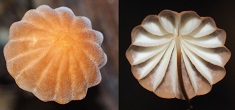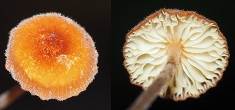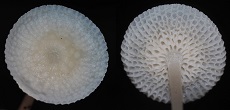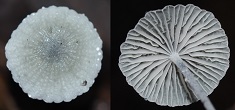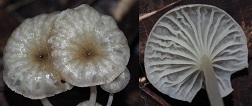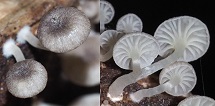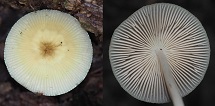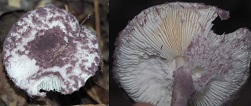| Home | Nature Weekly Index |
12 July 2020 | Mushrooms in the Park | Slime Mould |
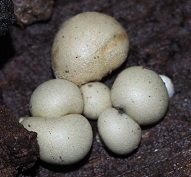
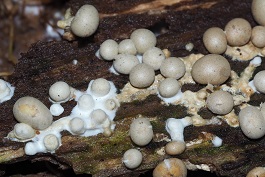 Due to the wetter weather in June, I had the chance again to see mushrooms sprouting from decaying woods and the
damp ground in the nearby park. Of those seen, 2 of them were small puffball-like. One of them turned out to be
a slime mould which was kind of wired as my impression of slime mould would look more like a patch of flatten,
thin, spread-out growth and not spherical-like clusters on rotten wood. Slime mould is not a mushroom and it
belongs to a different kingdom.
Due to the wetter weather in June, I had the chance again to see mushrooms sprouting from decaying woods and the
damp ground in the nearby park. Of those seen, 2 of them were small puffball-like. One of them turned out to be
a slime mould which was kind of wired as my impression of slime mould would look more like a patch of flatten,
thin, spread-out growth and not spherical-like clusters on rotten wood. Slime mould is not a mushroom and it
belongs to a different kingdom.
The online search led me to the family Reticulariaceae. The rounded structures that I saw were actually the macroscopic fruiting bodies of the slime mould. It might be a Lycogala species where the most commonly mentioned species online was Lycogala epidendrum (Wolf's Milk Slime Mould). At the early stage of their life-cycle, slime moulds are tiny amoeba-like organisms that feed on bacteria. At a later stage, they come together to produce plasmodia which can grow to a large size. The plasmodium then migrates to the surface and produces fruiting bodies or the mushroom-like structures.
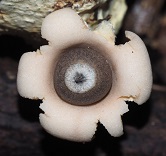
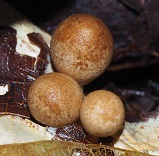 Talking about slime moulds, I had shared 2 posts on my encounters some years back in
January 2014 and
September 2014. Those looked very different from the
rounded one that I saw this time round.
Talking about slime moulds, I had shared 2 posts on my encounters some years back in
January 2014 and
September 2014. Those looked very different from the
rounded one that I saw this time round.
The second rounded growth was a mushroom from the family Geastraceae, commonly known as Earthstars. This particular Earthstar was relatively small with a width of about 1 centimetre. At maturity, the top of the mushroom split open, resulting in a structure that looked like a star. It was likely to be a Geastrum species. I could only spot one matured Earthstar in the area while the rest were small spherical structures waiting for the right moment to open up.
One brown stalk-and-cap gilled mushroom was quite abundance in an area. Though the top view of the first 2 pictures from the left looked different, I believe they are the same species but presented at different stage of development. It looked like the picture of Entoloma dulce showed in the Biodiversity of Singapore website. A search indicated that the type specimen of this species was collected from Papua New Guinea
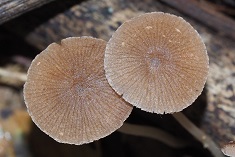
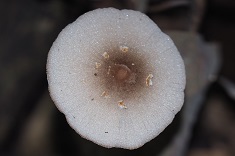
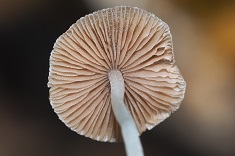
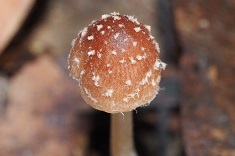
Below were the rest of the stalk-and-cap mushrooms seen. I had taken pictures of the underside of their caps as well and displayed them side-by-side with their top views. The orange mushroom in the first row (first from the left) should be Marasmius crinisequi (Horsehair Fungus). In the same row (third from the left), the white mushroom with pore-like underside should be Filoboletus manipularis (Luminous Pore-bonnet).
